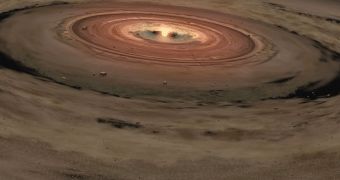An international collaboration of astronomers established in a new study that several metals play a key role in the formation and development of low-mass extrasolar planets. The team was led by EXOEarths experts at the Centro de Astrofísica da Universidade do Porto's (CAUP).
In order to arrive at this conclusion, investigators analyzed spectral readings provided by the European Southern Observatory's (ESO) High Accuracy Radial Velocity Planet Searcher (HARPS) spectrograph instrument, which is installed on a 3.6-meter telescope, at the La Silla Observatory in Chile.
The dataset covered 1,111 stars similar to our Sun, of which 109 are known to harbor varied numbers of Jupiter-class exoplanets in their orbits. An addition 26 host exoplanets about the size of Neptune.
After analyzing high-resolution spectra covering all these stellar objects, the team lead by CAUP research scientist Vardan Zh. Adibekyan found that a chemical ratio could be derived from the results, which indicated the stars most likely to host exoplanets.
The research was focused on studying so-called alpha elements, a class of chemicals that includes magnesium (Mg), silicon (Si) and titanium (Ti), among others. Scientists also quantified how much iron was available in each of the 1,111 stars.
The ratio of alpha elements to iron was found to be consistently higher in the case of Sun-like stars that hosted exoplanets. The highest discrepancy was observed for magnesium, the research group indicates.
“These findings indicate that some metals other than iron are involved in the process of planet formation, especially when the amount of iron is lower than solar,” Adibekyan comments.
“These results may provide strong constraints for the models of planet formation, especially for planets with low mass,” adds the astronomer, who was also the lead author of a new paper detailing the results.
The main implication of the new research is that low-mass planets need a minimum amount of metals so that they can continue forming. According to existing models, protoplanets appear from the constant clumping of larger and larger particles, inside a new star's protoplanetary disk.
Therefore, the dust and metal content of the disk is absolutely essential to the emergence of new worlds, the team concludes, quoted by Astrobiology Magazine.

 14 DAY TRIAL //
14 DAY TRIAL //